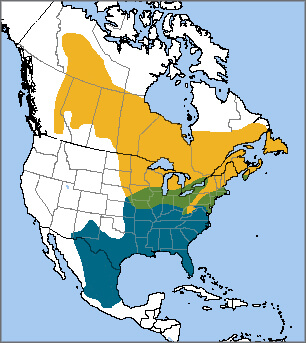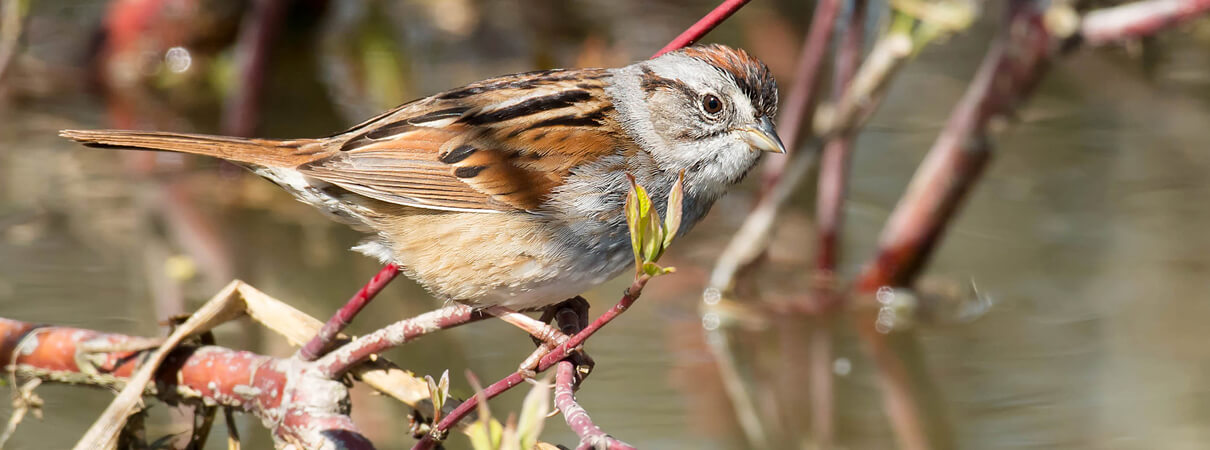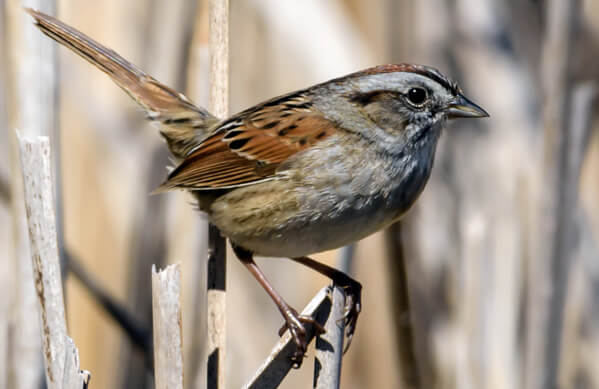 The Swamp Sparrow, like the Song Sparrow, is often dismissed as a "little brown job." But a closer look reveals a bird richly colored in earthy tones of russet, brown, and cool gray, set off by a white throat and reddish cap.
The Swamp Sparrow, like the Song Sparrow, is often dismissed as a "little brown job." But a closer look reveals a bird richly colored in earthy tones of russet, brown, and cool gray, set off by a white throat and reddish cap.
This shy bird is more often heard than seen; its song, a slow, sweet trill, has a liquid quality evocative of its marshy habitat. (Scroll down to hear the song and see if you agree!)
Disappearing Subspecies
Swamp Sparrows can be found throughout the eastern United States and boreal Canada, preferring marshes with tall vegetation and scattered shrubs.
This bird is a short-distance migrant, only moving as far south as central Mexico, with much of the population wintering in the southeastern United States. Although it doesn't fly far, it faces the same threats as birds that travel long distances, such as Blackpoll, Blackburnian, and Canada Warblers. Many migrating Swamp Sparrows are killed by collisions with glass, turbines, and communication towers; they're also preyed upon by outdoor cats.
Swamp Sparrow Song
This Swamp Sparrow was recorded in Nicolet–Yamaska, Québec. Other birds in the background include Red-winged Blackbird, Song Sparrow, Pied-billed Grebe, and Marsh Wren. Recorded by Martin St-Michel, XC391552. Accessible at www.xeno-canto.org/391552.
Swampy Specialties
Three subspecies of Swamp Sparrow are recognized. One, the “Coastal Plain” variant, prefers brackish rather than freshwater marshes and is only found in the Mid-Atlantic region, where it's considered endangered due to ongoing habitat loss. Its Latin subspecies name, nigrescens, refers to its blackish nape. In addition, it has a larger bill and grayer plumage than other Swamp Sparrow subspecies.
This wetland sparrow has longer legs than many of its relatives, an adaptation that allows it to wade in shallow water while foraging. A foraging Swamp Sparrow will even stick its head underwater to try to capture aquatic insects.

Swamp Sparrow by Paul Reeves Photography, Shutterstock
Swamp Sparrows feed heavily on insects during the summer, including beetles, caterpillars, grasshoppers, and other arthropods. Like Grasshopper, White-throated, and Baird's Sparrows, they also eat many seeds, especially in fall and winter.
In common with the Saltmarsh Sparrow, the Swamp Sparrow nests on or close to the ground, so it is vulnerable to nest mortality from flooding, which has become more frequent as climate change has accelerated.
Proactive Protection
More than 70 percent of Swamp Sparrows breed in and around the boreal forests of the northern U.S. and Canada. This habitat, home to numerous other breeding birds such as the Swainson's Thrush and Olive-sided Flycatcher, is known as "North America's Bird Nursery," and faces ongoing threats from oil and gas exploration, logging, and mining.
ABC's BirdScapes approach to conservation, which stresses the protection of both nesting and wintering habitats, benefits the Swamp Sparrow and many other short- and long-distance migratory species. Our advocacy programs, including Cats Indoors and Bird-Smart Wind Energy, work to reduce or remove some of the obstacles Swamp Sparrows face as they migrate.
Donate to support ABC's conservation mission!



















































